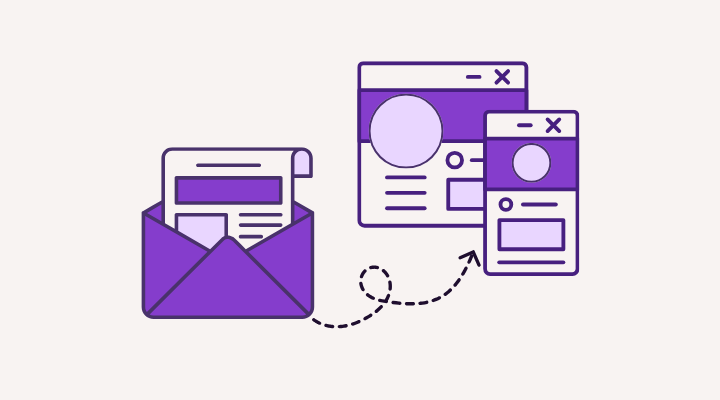A landing page acts as the "bridge" that turns interest into action and clicks into success. By designing and integrating targeted landing pages into your email campaigns, you can significantly boost engagement, conversion rates, and ultimately, sales.
This article explores why landing pages are essential for your business's marketing strategy and provides steps to integrate them effectively into your email campaigns
Why Landing Pages are crucial in email marketing
An email serves as an invitation—it grabs the recipient’s attention and encourages them to act. However, the page they land on (the landing page) determines whether they complete the desired action or lose interest.
Unlike a homepage, a landing page is focused and tailored to a specific promotional goal. It offers:
- Consistency: A landing page aligned with the email message ensures a smooth experience, reducing confusion and building trust.
- Targeted Conversions: With a single purpose (e.g., sign-up, file download, purchase), landing pages eliminate distractions.
- Personalization: Tailored landing pages for different audience segments enhance effectiveness and boost conversions.
- Easy Data Analysis: Dedicated landing pages simplify performance tracking, helping you understand what works.
Without a well-designed landing page, you risk losing the attention you worked hard to capture.
How to create effective Landing Pages for email campaigns
Maintain consistency
- Use the same headlines, visuals, and tone in the email and the landing page.
- Repeat the email's call-to-action (CTA) on the landing page.
- Ensure consistent design and branding to avoid confusion.
Focus on a single call-to-action (CTA)
A landing page should have one clear goal. Too many choices lead to decision fatigue and lower conversions.
- Make the CTA button prominent and easy to find.
- Use motivating language, such as “Claim Your Discount” or “Download the Guide.”
- Remove unnecessary links or navigation menus that might distract users.
Optimize for mobile devices
Since many users check emails on their phones, ensure your landing page is mobile-friendly.
- Use responsive design so the page adjusts to different screen sizes.
- Keep text concise, and ensure buttons are large enough for easy tapping.
- Ensure images and videos load quickly on mobile devices.
Include social proof
Users are more likely to act when they see others trust your brand.
- Add testimonials, reviews, or case studies to the landing page.
- Highlight trust badges, certifications, or guarantees.
Step-by-step Integration of Landing Pages into Email Campaigns
Step 1: Define your campaign goal
Before starting, clarify the goal you want to achieve. Do you want recipients to:
- Sign up for a webinar?
- Purchase a new product?
- Download a resource or eBook?
Your goal will shape the email content and landing page design.
Step 2: Create a targeted landing page
Design a landing page that supports your goal. Include:
- A clear headline.
- A concise message.
- A compelling CTA.
Step 3: Craft the email
Develop an email that promotes your offer. Its content and design should align with the landing page.
Example:
- Email Subject: “Get 20% Off Our New Collection!”
- Landing Page Headline: “20% Off Your Favorite Designs.”
Step 4: Add a clear call-to-action
Your email should guide readers to the landing page with a straightforward CTA.
- Use phrases like “Shop Now” or “Sign Up Here” that clearly indicate the next step.
- Ensure the CTA is prominent and easy to understand so recipients know exactly what will happen when they click.
Step 5: Ensure a smooth user experience
When users click your email, they should land on a page that delivers what you promised.
- If your email mentions a discount or special offer, the landing page should focus exclusively on that.
- Avoid distractions like unrelated content or conflicting information.
- Keep the experience simple and aligned with user expectations.
Step 6: Monitor and optimize results
Use analytics tools to track campaign performance. Monitor metrics like:
- Click-through rate (CTR).
- Conversion rate.
- Time spent on the landing page.
If results are underwhelming, analyze the data to identify areas for improvement. For example:
- Adjust the CTA text.
- Test a new headline.
- Optimize the page for faster load times.
By connecting email campaigns to targeted landing pages, you can streamline the user journey and maximize your marketing results. Start creating tailored landing pages for your campaigns today and watch your conversions soar!


